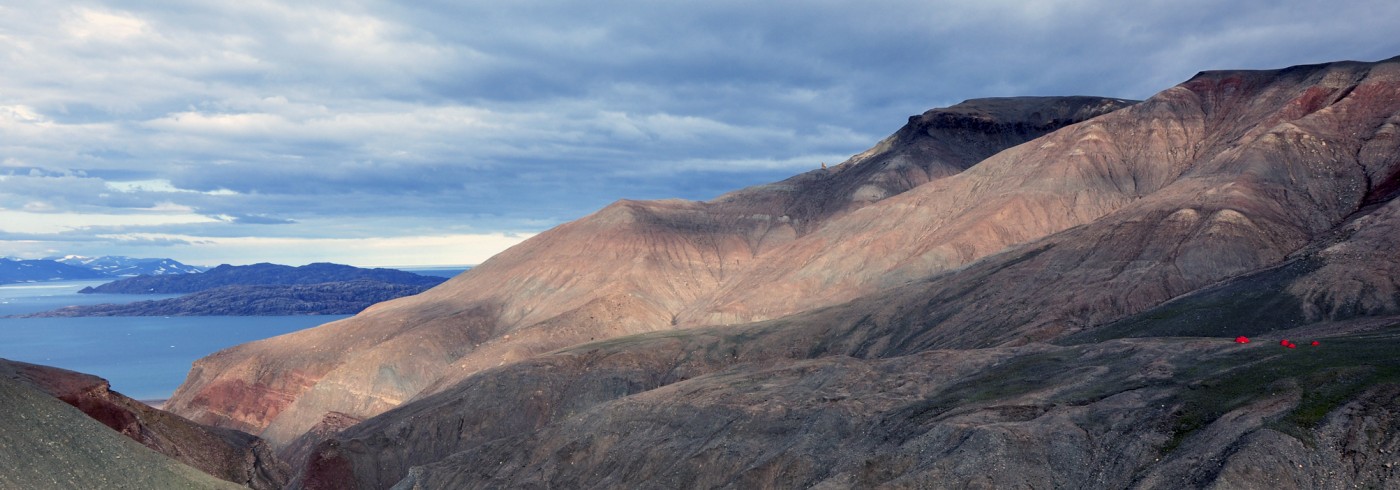Spent the morning identifying and cataloguing our finds, which all had to be packed in our metal containers for transport back to Sweden. We have an unprecedented amount of new and very complete Cunegonathus material. There is also a bonanza of coprolites ranging from the small spiral droppings of chondrichthyans to possible digestive residues from sarcopterygians or lobe-finned fishes.
Lasse took a walk up to the summit of Celsius Bjerg to see if he could locate a safer (and much shorter) route to our quarry.
He came back an hour or so later saying that it could be done. This will save us a huge amount of time and reduce the risk of injury either from rocks or unstable snow.
The photos of the tracks Grzegorz has found also look promising. He will return with Lasse tomorrow to make a silicon mould.
If correct these would be the first evidence we have for the actual ecology of our first Greenland “fish out of water”. All of the bony fossils have otherwise represented the remains of bodies washed downriver. The footprints are therefore vital because they are traces of “living” animals and give direct indication of where they must have lived. The question is was this in the fast-flowing rivers, the overbank flooded forests that were now preserved as impressions in the sandstone, or some other unknown environment upriver?
Another puzzle is how exactly did they move? Skeletons will give some indication but only the tracks can provide definitive proof.
We will see when the mould arrives.

